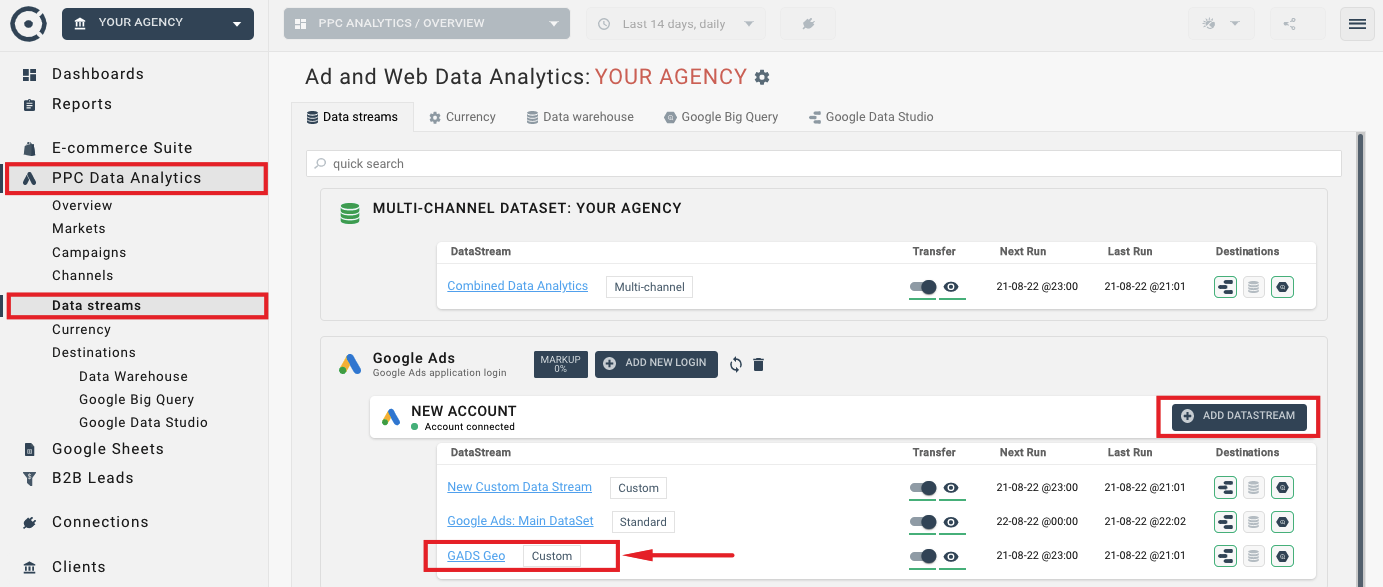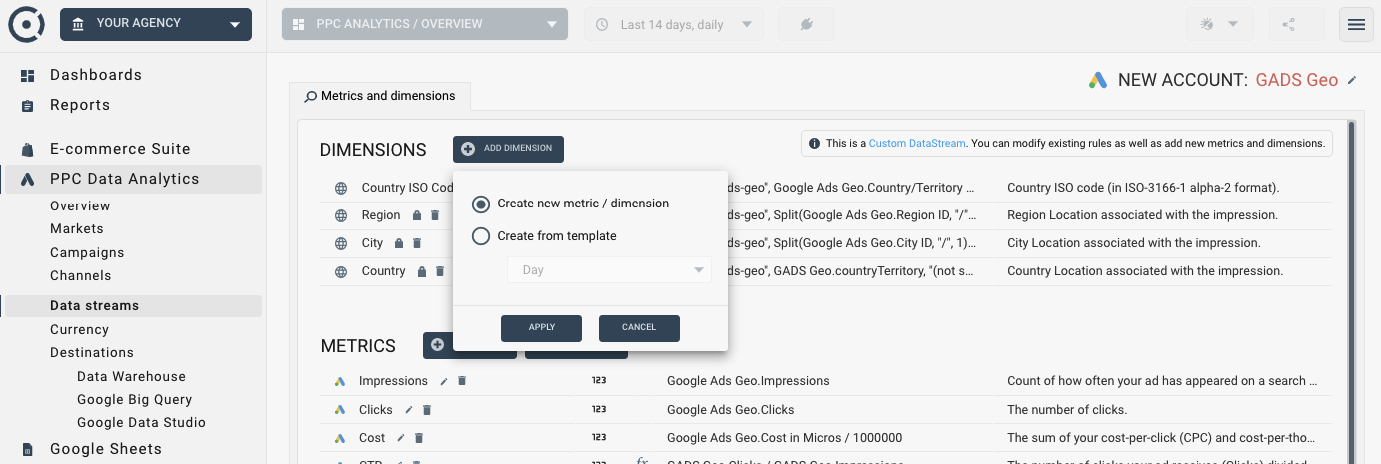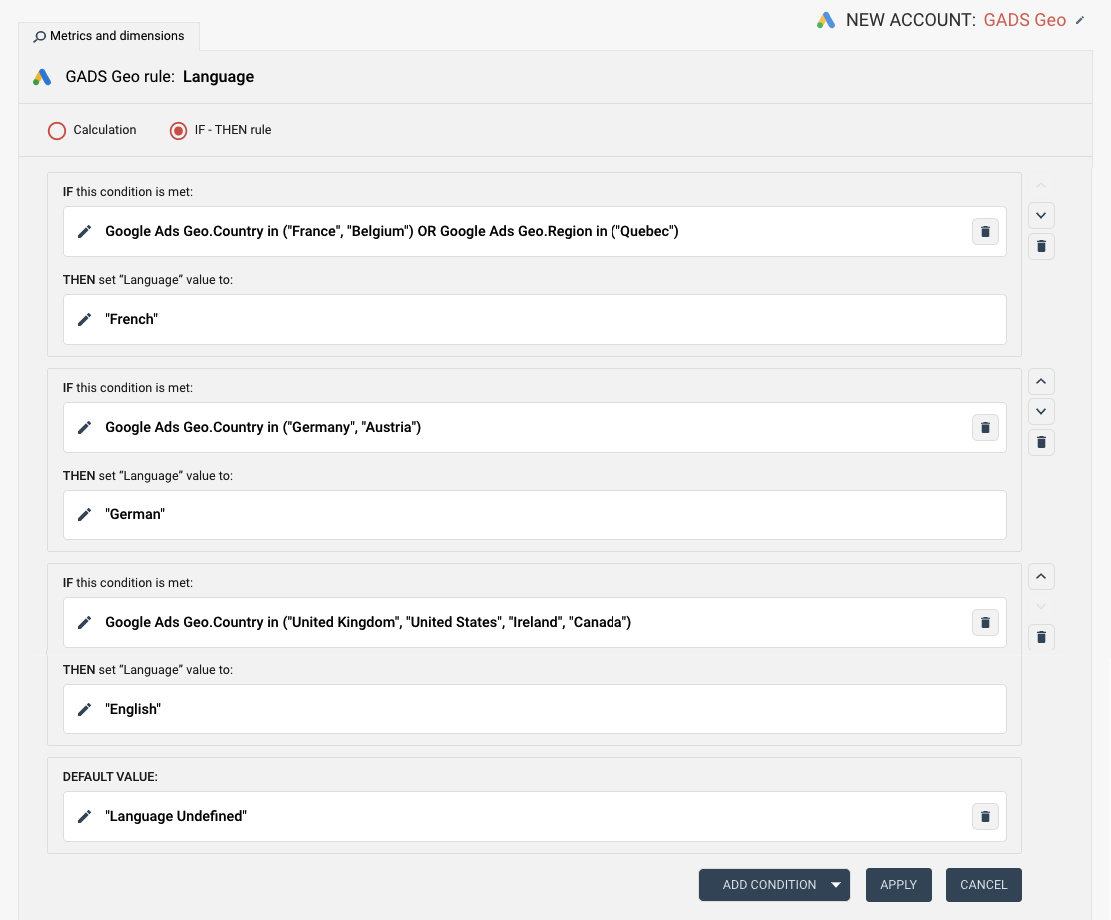Using rules in custom dimensions: aggregating data by language
In this example, we will create a new dimension that will allow us to break down ad spend by the language of paid website visitors as shown in the Data Explorer widget below:

We can only use Google Ads Geo stream that has Region and Country metric. Accurate identification of the language requires many conditions and cases. We will use a very simplified version of the language identification for French, German and English-speaking visitors:
- Paid traffic from the USA, UK, Ireland and Canada will have to English language
- Paid traffic from France, Belgium and the Canadian province of Quebeck will have French language
- Paid traffic from Germany and Austria will have German language
- All other paid traffic will have “Undefined language”
First, locate the Google Ads GEO data stream in the left panel and click on its name to open the list of metrics and dimension of the stream.

Click the ADD DIMENSION button to create the new Language dimension.

Set new dimension’s name and description and click the ADD NEW RULE button.

We will define 2 cases (IF-THEN clauses in the rule) for French and German and will set the default rule value to “Language Undefined”:

Here is an example of the case definition for the French language (paid traffic from France, Belgium and the Canadian province of Quebeck):

Click the APPLY button and preview the results in the Data Explorer widget before implementing the change. The final result will look like this:

We can change the visualisation of this breakdown to “Pie & Graph” to display the following widget type:

If the example above we have filtered the output by excluding “Undefined Language” values.
For more advanced rule examples, please check some of the following tutorials: